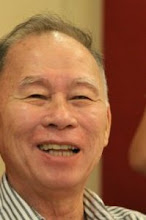There are 3 recent news items that have caught my attention and should be of interest to all patriotic Pinoys and non-Pinoys unselfishly taking steps to move our country forward deep into the 21st century.
The most recent is the article by Louella D. Desiderio of The Philippine Star writing about the creation of ICT Department. The Business Processing Association of the Philippines (BPAP) is pushing for the approval of a bill that would create an agency for information and communication technology (ICT), citing it would help attract more investors and create more jobs in the ICT sector, an official of the group said.
The second item, “An IT-driven government”, is written by Peter Wallace, a consistent “critic” of the Philippines by pointing out our “leadership” failures, but simultaneously advising how to overcome such weaknesses by proudly highlighting the native assets of the Filipino.
He asserts:
“Over the past 35 years the Philippines has attracted $30 billion in foreign direct investments (FDI). Thailand, perhaps our most comparable neighbor, got $100 billion, Malaysia $95 billion, Indonesia $57 billion, Singapore $279 billion and Vietnam $49 billion over the spread of just the past 10 years. FDI is a measure of confidence in a country’s governance.
Even domestic investments by Filipinos themselves, have been far too little in the long term, sustainable wealth producing activities, e.g. manufacturing, mining and agri-business. We estimate that of the P1.4 trillion approved investments in the past eight years, only around 40 percent fits into these categories.”
To be fair, President Aquino is addressing one primary reason, endemic corruption. But there are many more problems that need immediate attention. The foolish anti-worker labor laws still exist; the courts still interfere needlessly and excessively in what should be just normal business practice and risk. The bureaucracy from the bottom is still one of the most convoluted, snail-paced and myopic in Asia.
And this is where we segue into the first article that puts forth Computerization.
Let us make the Philippines a world leader and computerize starting with the organization of an ICT department that should be worthy of everyone's trust. If Government cannot pay the salaries to attract the expertise needed, the private sector can assist through a public-private setup. Government’s role can be to ensure that all is done properly.
But, at the same time, let us ensure to have future leaders that break away from today’s proven failed systems, and truly reform and grow this otherwise marvelous country.
But, at the same time, let us ensure to have future leaders that break away from today’s proven failed systems, and truly reform and grow this otherwise marvelous country.
The third item related to computerization is the announced expansion of Philhealth to also cover members’ outpatient medical needs. Our national health insurance has long been mainly supporting inpatient hospitalization and selected catastrophic outpatient protocols such as dialysis centers, neglecting preventive and primary care. Although there have been no further announcements on how such benefits will be dispensed, we assume that this will be provided through the barangay health center, our grassroots health provider.
A working telemedicine solution model designed by the Heart Institute of the Caribbean (HIC) is available upon request. This telemedicine platform can give access to expert medical specialists anywhere in the world, just by a click of the button. The patient does not have to travel, avoid unnecessary expense and does not have to experience the anxiety of not knowing the availability of expertise.
But all these can only happen with the proper firm direction of national leadership – starting with the launching of a single credible ICT department.



